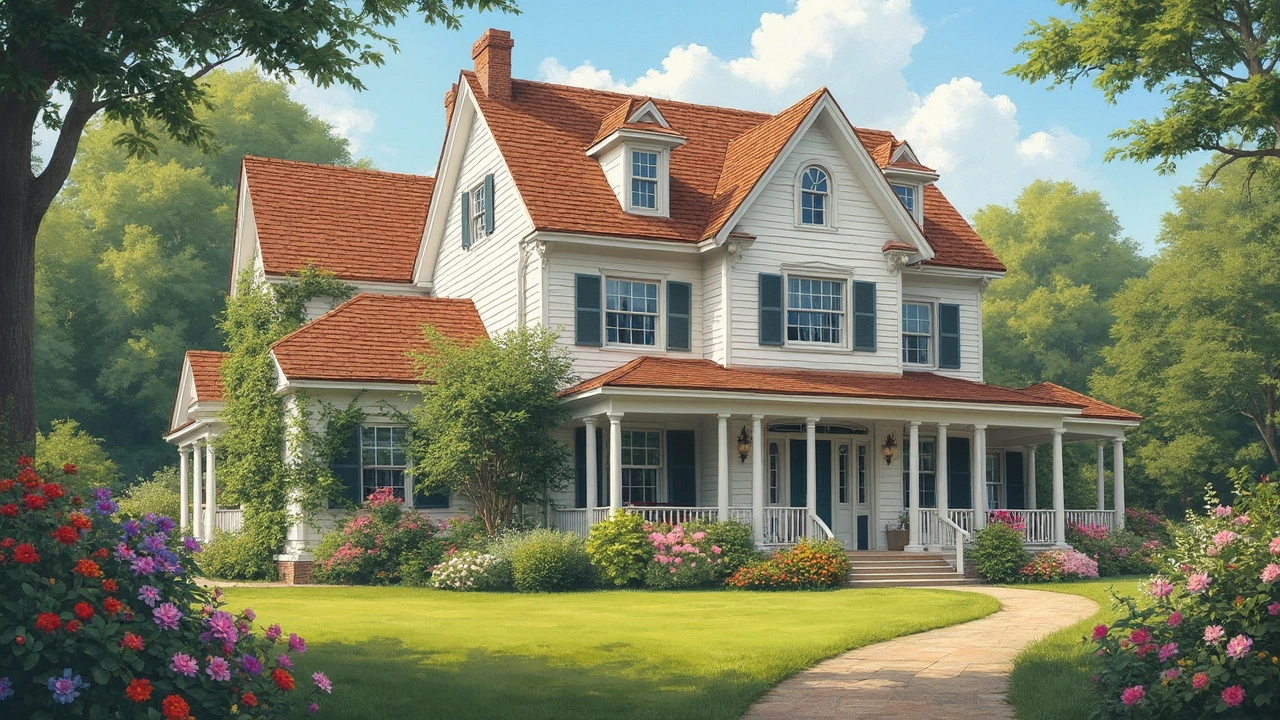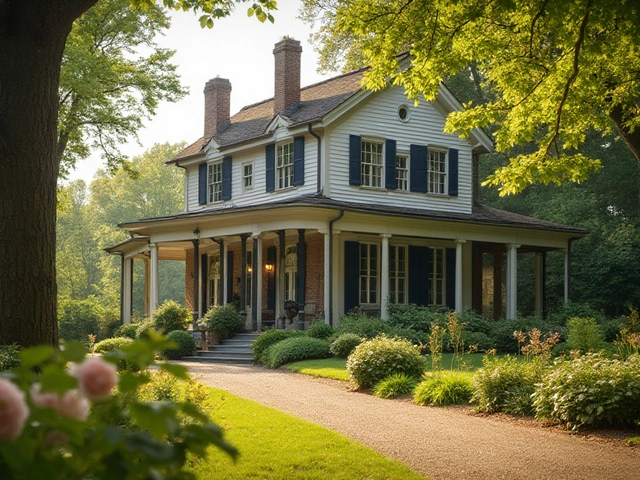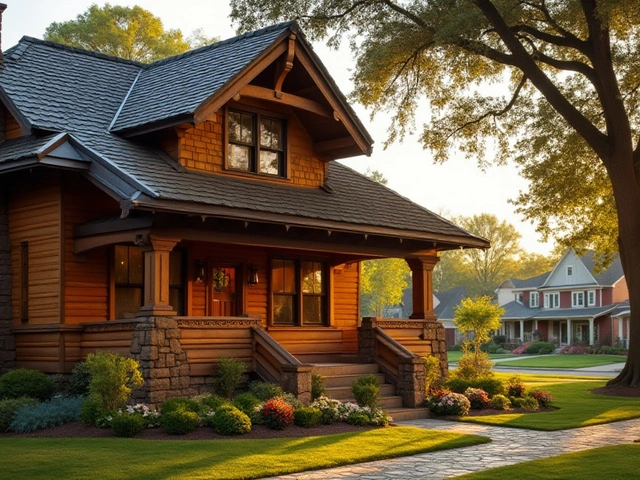Colonial Revival architecture might sound like something out of the distant past, but it’s actually buzzing with relevance even in today’s modern housing market. Ever wondered why some homes just seem to capture that timeless charm, merging the old with the new in a seamless manner? It’s likely they’ve tapped into this classic style. Let's unpack what makes Colonial Revival architecture more than just a history lesson.
The roots of this architectural style dig deep into America's past, inspired by earlier colonial homes. Think of those stately homes with balanced windows and inviting porticoes. But it’s not all about nostalgia; it’s about how these features serve functional, modern needs while keeping that familiar, comforting aesthetic. Want symmetry and simplicity combined with a touch of grandeur? You got it.
- The Roots of Colonial Revival
- Key Features That Stand Out
- Why Choose Colonial Revival Today
- Incorporating Into Modern Homes
- Preservation and Sustainability
The Roots of Colonial Revival
To understand the charm of Colonial Revival architecture, we need to take a trip back to the time when America was reflecting on its young past. Around the late 19th and early 20th centuries, a sense of nostalgia swept across the nation. People were looking to connect with their historical roots, celebrating a simpler American life that was linked to the colonial era.
This architectural movement was fueled by the 1876 Centennial Exposition in Philadelphia, which sparked interest in colonial houses of New England and the Southern states. People wanted to preserve the essence and elegance of those styles, leading to a revival of these timeless trends.
Origin and Influence
The Revival doesn’t just mean copying old styles. Architects back then studied colonial buildings, like Virginia's Governor's Palace and Williamsburg's restored homes, recreating their essence but adapting them for contemporary needs.
Colonial Revival wasn’t just about a single style either. It drew from various colonial designs, including Georgian, Federal, and Dutch, allowing homeowners to select features they found most appealing. It’s like having a menu of historical styles to choose from!
Key Catalysts
By around 1910, with World War I on the horizon, this movement picked up even more steam. As soldiers returned with tales of European grandeur, there was a push to develop an American style of grandeur—only theirs was tied to simpler, pre-industrial ideals.
Look at this intriguing timeline:
| Year | Event |
|---|---|
| 1876 | Centennial Exposition sparks interest |
| 1910 | Peak period for adoption of this style |
| 1920s | Colonial Revival becomes a dominant style in home building |
Why It Stuck Around
It’s not hard to see why the Colonial Revival style remained popular. Aside from aesthetics, it had practical advantages. These homes were often energy efficient, with thick walls and central chimneys. Additionally, the symmetrical facades and shuttered windows are not only pleasing but practical for home ventilation.
All these aspects ensured that Colonial Revival was not just a passing trend but a standby in American architecture. Its ability to transform while holding onto core principles is why it still turns heads (and warms hearts) even today.
Key Features That Stand Out
When you look at Colonial Revival homes, there are some unmistakable features that immediately catch your eye. These aren't just random design choices; they're deliberate nods to America's architectural heritage, with a few tweaks to suit modern tastes.
Symmetry is King
One of the most noticeable aspects of Colonial Revival architecture is its love for symmetry. Take a good look at the facades, and you'll often find windows and doors perfectly aligned. This gives the home a neat, balanced look that's pleasing to the eye. This symmetry isn't just for show—it's about creating a sense of harmony and order that reflects stability and warmth.
Windows That Steal the Show
Windows in Colonial Revival homes often come in pairs. Double-hung sash windows are a popular choice, offering both practicality and style. With shutters that frame these windows, you're adding a touch of charm that blends function with beauty. These windows not only provide ample light but also hark back to an era when craftsmanship was key.
Attention-Grabbing Entrances
A welcoming entryway is another hallmark. You'll frequently see a front door centered on the home, often decorated with a fanlight or sidelights. The entrance might be flanked by classic columns, lending that iconic and inviting feel that never goes out of style.
Rooflines and Chimneys
Moving to the top, the rooflines in these homes are typically gabled or hipped, contributing to their distinctive silhouette. And let's not forget the chimneys. Whether they're functional or just for show, multiple chimneys can often be found, adding to the picturesque quality of these homes.
Color and Material Choices
A traditional palette usually rules here, with whites, light grays, and other neutral tones dominating. Materials like wood and brick complement the design with their earthy textures and timeless appeal. The idea is to use materials that connect the building to its roots while still looking fresh.
Fascinated by these features? They’re not just an architectural nod to the past; they're practical and visually appeasing elements that make Colonial Revival homes a lasting favorite for many homeowners today.
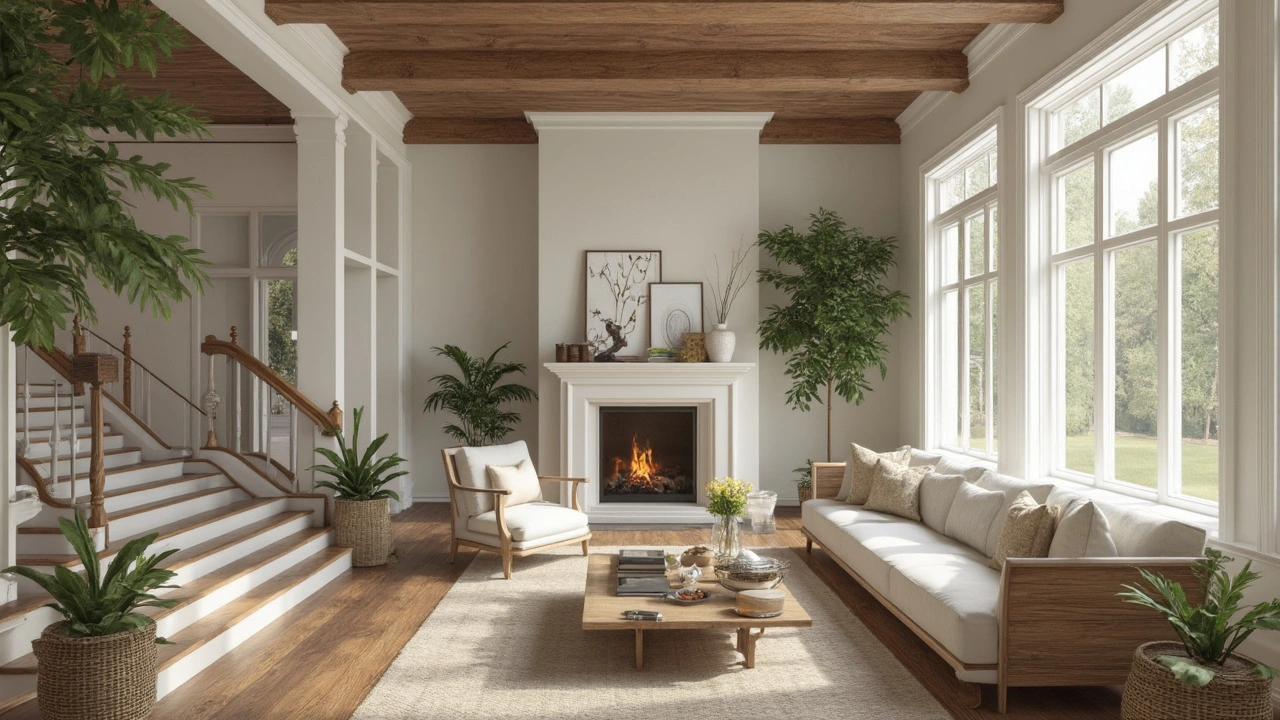
Why Choose Colonial Revival Today
Choosing Colonial Revival architecture isn't just about aesthetics. It's about embracing a style that blends tradition with modern practicality. Let's dig into the reasons why this style is making a strong case for itself in the twenty-first century.
Timeless Appeal
One of the strongest selling points of Colonial Revival homes is their timeless appeal. They have a classic look that never seems to go out of fashion, making them perfect for homeowners who want a house that feels both nostalgic and fresh. People love how these homes maintain their charm over generations, evoking a sense of stability and heritage.
Structural Simplicity and Balance
The design simplicity should not be underestimated. With symmetrical windows and balanced layouts, Colonial Revival homes are straightforward, making renovation or expansion a breeze. It's like having a blank canvas, but one with a rich history behind it. Looking for straightforward elegance? This might be your go-to.
Adaptability to Modern Needs
What's fun about these homes is their adaptability. Need an open floor plan or eco-friendly features? You can incorporate these without losing that colonial charm. Modern utilities and smart home tech fit right in, making it easier than you might think to combine old-school texture with modern convenience.
Investment and Value
When it comes to property values, homes with Colonial Revival architecture often hold their worth and can even appreciate over time. Why? Potential buyers are not just looking for a house, but a slice of American history. A well-maintained Colonial can be a real asset in real estate.
Community and Heritage
Living in a Colonial Revival home often means more than just bricks and mortar. It's about being part of something bigger, a community that values architectural legacy. In neighborhoods where this style is prevalent, there’s often a strong sense of community pride and identity.
- Timeless design that won't go out of style.
- Easy to renovate thanks to its simple structure.
- Adaptable to modern conveniences and tech.
- Good long-term investment for property value.
- Promotes community heritage and pride.
Incorporating Into Modern Homes
Looking to liven up your space with some Colonial Revival flair? It’s a great way to add character while keeping things effortlessly classy. This style isn't locked in the past; it works wonders in both renovations and new constructions. So, how do you bring this historical touch into your modern living area?
Balance and Symmetry
The first thing you might notice about Colonial Revival homes is their balance. These homes are all about symmetrical facades—perfectly aligned windows and doors create a welcoming sense of order. If you're designing a new home, consider placing windows in pairs or groups symmetrically. It doesn’t just look great; it just does something to the mind, calming you right at first glance.
Material Choices
When it comes to building materials, think traditional with a modern twist. Brick, wood siding, and white clapboards are staples of Colonial Revival. However, modern materials like engineered wood or composite siding can offer durability without losing the traditional look. Don't shy away from modern innovations that make these homes both beautiful and practical.
Inviting Outdoor Spaces
A signature of Colonial Revival is its charming porches. If you’ve got the space, think about adding a front porch with columns. These add a picturesque element and are also great for relaxing on a summer day. Combine traditional porch design with modern outdoor furniture to mix the best of both worlds.
Interior and Layout
Inside, Colonial Revival homes often feature a center hall layout. This makes the most of your space and creates a straightforward flow between rooms—a feature both appealing and user-friendly. If you're doing an interior remodel, consider this traditional floor plan to bring out the home's natural flow.
Adapting for Sustainability
Modern takes on Colonial Revival also prioritize energy efficiency. Adding features like double-glazed windows and improved insulation can maintain the aesthetic appeal while supporting a green lifestyle.
Incorporating Colonial Revival elements into your home isn’t just about looks. It’s about capturing that timeless vibe while ensuring your home meets today’s standards. With the right mix of traditional and modern, your home won’t just fit in; it’ll stand out.
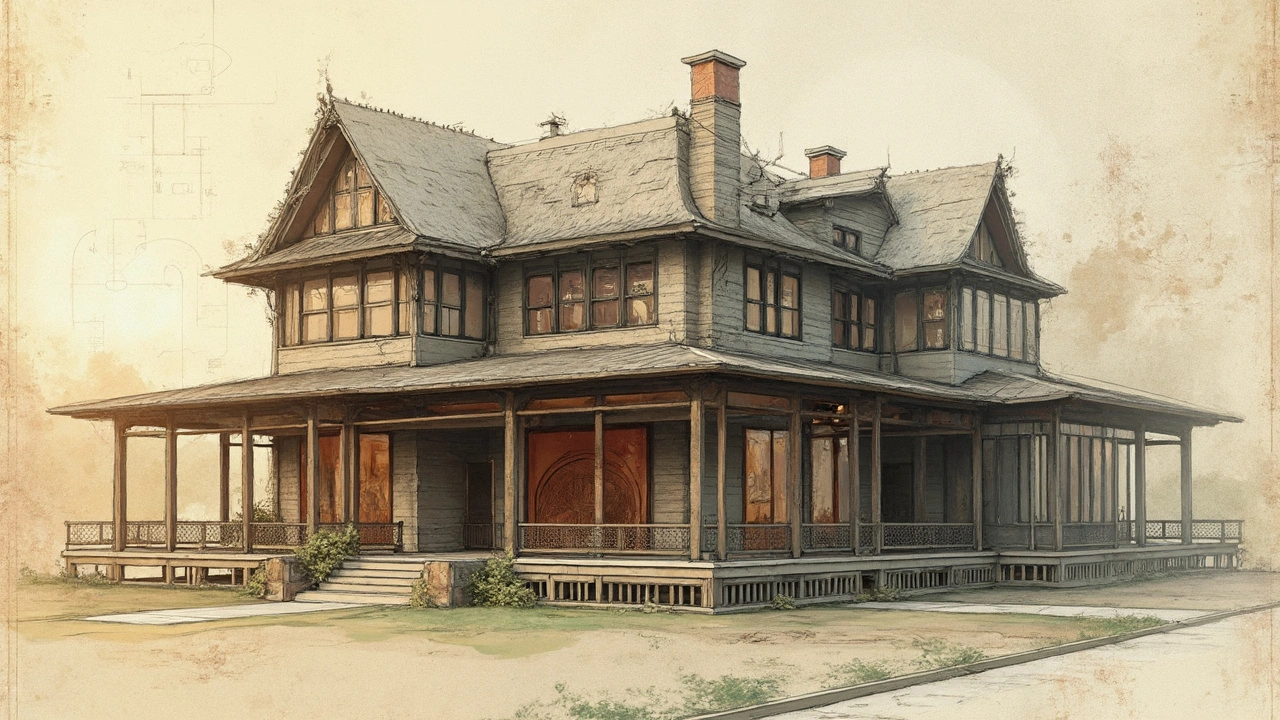
Preservation and Sustainability
When it comes to Colonial Revival architecture, preservation isn’t just about keeping our heritage alive—it's also an opportunity to embrace sustainability. Think of it as the ultimate recycling: why build new when the old can be lovingly restored? By maintaining and upgrading these homes, we contribute to environmental efforts by reducing the demand for new building materials.
There's this misconception that older homes can't be energy-efficient, but that's just not true. With the right retrofits, a Colonial Revival home can match—or even surpass—the energy efficiency of modern builds. How do you do it? Start with proper insulation and energy-efficient windows. You'd be surprised how these simple changes can make a huge difference. And hey, those thick old walls have their own insulating properties!
Embracing Modern Techniques
Just because a home looks like it's from a bygone era doesn’t mean it can’t have smart home tech. Integrating modern lighting, heating, and cooling systems can enhance comfort while reducing carbon footprints. Solar panels? Sure! They can be seamlessly installed on roofs without disrupting that classic symmetrical look.
Preservation also involves maintaining the charm of details like the shutters and doors, which many argue are integral to the architectural integrity of a home. But it never hurts to sneak in a little modern touch, like weatherproofing or adaptive materials that improve lifespan and usability.
Community Value and Economic Benefits
Historically preserved homes aren't just eye candy. They can even boost local economies. Areas with a high concentration of well-maintained Colonial Revival homes tend to see increased tourism and higher property values. Not to mention, these homes often require skilled labor for maintenance, offering job opportunities. Needless to say, it’s a win-win.
Sustainability isn't just a trend; it's the future. When preservation and sustainability work hand-in-hand, we create living spaces that honor the past while preparing for tomorrow. It's not just about holding onto the old ways but about making them even better.

